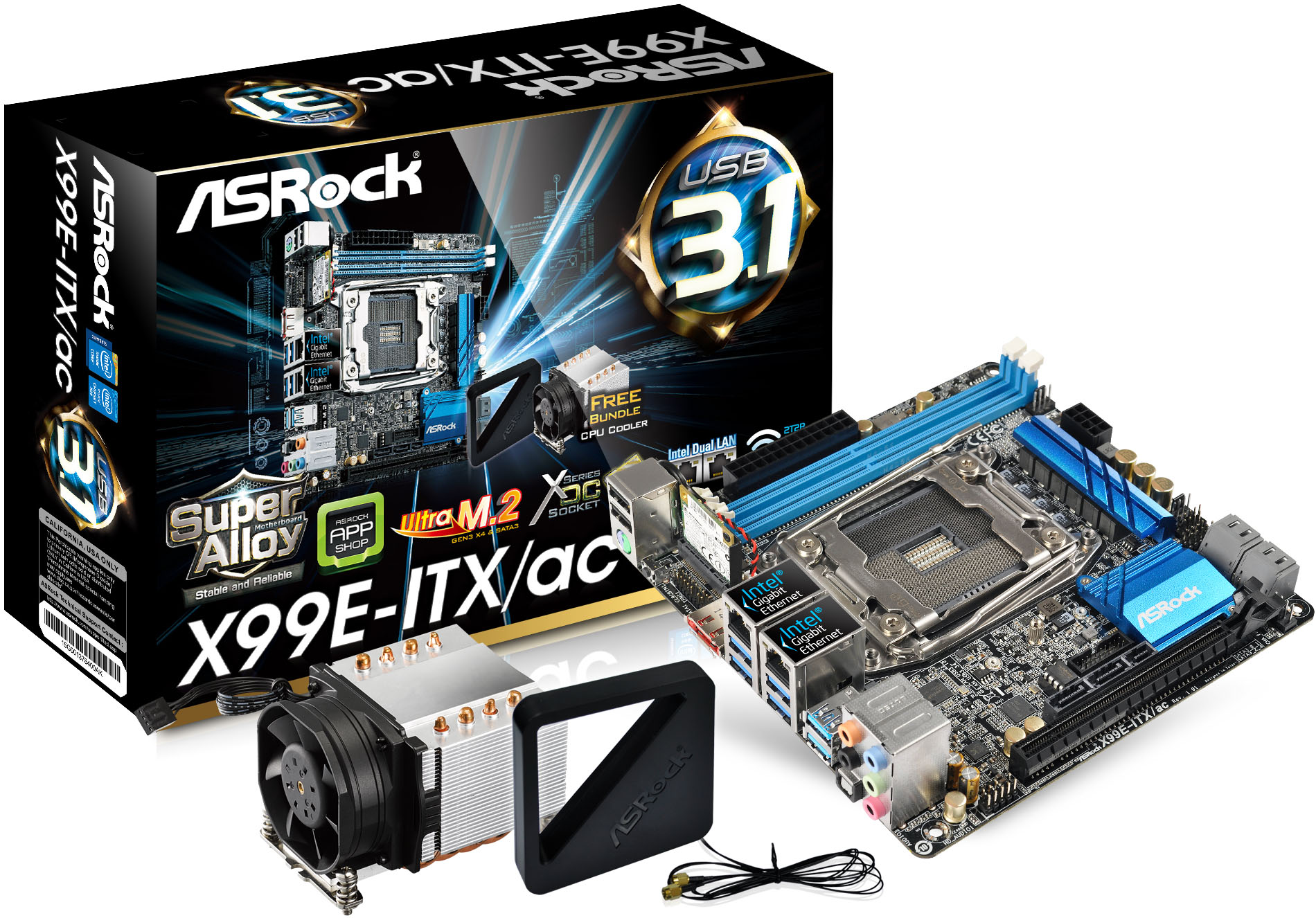Did ASRock Just Put X99 On A Mini-ITX Board? Oh Yes It Did!
ASRock has gone mad -- it has built a Mini-ITX motherboard based on the X99 platform (and secretly we love it).

Recently, ASRock announced that it would be displaying Extreme6 Z97 and X99 motherboards at CeBIT with USB 3.1, but it turns out that there is another board that we will be seeing – the X99E-ITX/ac.
What's interesting here is that a couple of months ago, when all the X99 motherboards were launching, I asked ASRock reps whether they were interested in making a Mini-ITX motherboard with the X99 chipset and LGA2011-3 socket. At the time, we were told that ASRock had been toying with the idea but wasn't sure whether it would be worth it, due to the limited market it had been addressing.
We wanted to see a "stupid powerful" system built with Mini-ITX, and thus we're glad to see the X99E-ITX/ac; it's delightfully ludicrous. Why? Because nobody has ever put an Extreme-series chipset on a Mini-ITX board, and what ASRock doing so is nothing short of impressive. Never before has Mini-ITX seen this kind of performance.
Naturally, however, when working on a Mini-ITX board, sacrifices must be made. The board, therefore, doesn't have the usual eight DDR4 memory slots we see on larger boards, and the storage connectivity is also more limited. On top of that, being a Mini-ITX board, it also has only a single PCI-Express 3.0 x16 slot. For storage there are six SATA3 connectors, two of which can be used to make a single SATA-Express connector. We don't immediately see an M.2 connector, although it is possible that there is one on the backside of the board because there simply is no space on the front.
The board will also come with USB 3.1 and Wireless AC connectivity.
ASRock included a CPU cooler with the X99E-ITX/ac, which is a bit unconventional, but ASRock made the decision because of the space restraints. ASRock has had to use the narrow LGA2011-3 socket, which isn't compatible with standard LGA2011 CPU coolers, and there aren't really all that many coolers for the narrow socket on the consumer market. We fear, actually, that this may be the biggest sales killer of this board, as most interested folks are probably enthusiasts who are not interested in using sub-par, noisy cooling.
Get Tom's Hardware's best news and in-depth reviews, straight to your inbox.
When the board will be available, exact tech specs, and pricing remain unknown, but we hope to find out more during CeBIT next week.
Follow Niels Broekhuijsen @NBroekhuijsen. Follow us @tomshardware, on Facebook and on Google+.
Niels Broekhuijsen is a Contributing Writer for Tom's Hardware US. He reviews cases, water cooling and pc builds.
-
dstarr3 Hooray for doing cool things like this, but I have to admit, I don't really see the point. Because if you're building a small-but-powerful gaming rig, a Haswell-E doesn't really get you much better gaming performance than a regular i5 or i7. And you only get two memory slots, so the benefit of quad-channel 64GB RAM is lost. So you're really kind of wasting your money on such a high-end processor there. But if you're building a workstation, you definitely want more than two memory slots, and you probably want at least two or three PCIe slots for expansion cards. So... why does this exist?Reply -
raschmidt1 I see an M.2 slot, or rather I see the place where you would screw one down, so their must be an M.2. On the Z77's and Z97's the mSATA/M.2 is on the back, but on my A88X ITX the Wifi/mSATA slot is in the same place as this one. This board looks easily as crowded as an FM2 ITX but sticking a 6 core or 8 core Intel processor on here sounds like fun. Shame on the cooler but I think most people who really need an 8 core CPU aren't gamers and aren't quite as interested in overclocking.Reply -
xkche Why don´t use any "mini-board" outside the motherboard to add features?.Reply
Focus the principal on the Motherboard and any other things in a secondary board, like the VRM on the Asus Impact. -
InvalidError Reply
The ITX form format is a little tight on surface area for that. It is already surprising enough that they put standard-size DIMMs instead of SODIMMs.15476217 said:no quad-channel ! ! ? ?
Not sure what sort of public ASRock is going after here, but the enthusiast who wants every possible X99/i7-58xx/59xx feature exposed clearly is not it. -
futureyes You can see the M.2 mounting points above the PCIe x16 and behind the Audio/Lower USB 3.Reply -
mosc would have preferred the smaller DIM'S and quad channel. It's not really X99 without quad channel and if it's not, what's the point?Reply
Though for most people considering X99, a power supply crammed into an ITX case isn't going to meet their graphics needs. -
Osmin It would be nice if they had a case designed for it with sealed liquid cooling for both processor and graphics card. Without heat issues, you could overclock the expensive processor and graphics card to make this an interesting choice for a custom box. I like the USB 3.1 support and the M.2 slot. Faster DDR4 memory in quad channel would only marginally improve overall speed.Reply -
Blueberries I guess I just don't see the point in an x99 chipset on a board with 2 ram DIMMS and one expansion slot. In what mockery would you use this? Intel HD Graphics benchmarking?Reply
